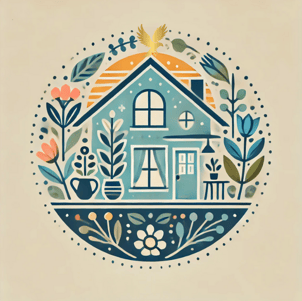How to Create a Cozy Reading Nook in Your Home
A step-by-step guide to designing a relaxing corner perfect for reading and unwinding.
2/5/202518 min read
Designating a corner of your home as a personal reading nook can be a wonderful way to carve out a peaceful haven in the midst of everyday life. This special spot not only serves as a comfortable place to dive into your favorite books, but it also brings a sense of warmth and intimacy to your home’s overall design. In a busy world filled with digital distractions and constant stimuli, a reading nook can become a sanctuary that helps you slow down, breathe, and immerse yourself in the simple joy of reading. Whether you live in a cozy studio apartment or a sprawling family home, crafting a reading nook is entirely possible with a bit of creativity and planning.
In this post, we’ll walk through a detailed, step-by-step process to guide you in creating the perfect space for quiet reading, reflection, and unwinding. From selecting the ideal location and incorporating comfortable seating to customizing décor and choosing the right lighting, each aspect of this process can be tailored to suit your personal style, the architecture of your home, and your reading preferences. We’ll cover how to enhance your nook with carefully chosen textiles, accent pieces, storage solutions, and even a touch of greenery. By the end, you’ll have all the inspiration and tips you need to transform a simple corner into a tranquil reading oasis—one that you can retreat to anytime you need a mental getaway.
So, grab a cup of tea, gather your thoughts, and let’s get started on designing your dream reading nook. Whether you’re aiming for a minimalist hideaway or a luxurious reading retreat, this guide will lay out everything you need to know. Here’s to turning a small corner of your home into a magical space where stories, imagination, and relaxation come alive!
1. Choosing the Perfect Spot
The first step in creating a cozy reading nook is picking the right location. This might sound simple, but there are several factors to keep in mind:
Privacy: Look for an area that naturally feels more secluded or serene. While some homeowners have spare rooms or unused corners beneath a staircase, others might only have a window seat or a section of the living room. Even if your home doesn’t have an obvious private corner, you can create a sense of privacy by adding a room divider, bookshelf, or a decorative screen. The goal is to find a spot that feels a bit removed from the hustle and bustle of daily activities, so you’re less likely to be disturbed.
Natural Light: Ample natural light is essential for a reading nook. Large windows, bay windows, or even skylights provide a bright and inviting environment during the daytime. If possible, choose an area that gets plenty of daylight without harsh glare. Keep in mind how the light shifts throughout the day; an east-facing corner might be perfect if you like morning reading sessions, while a west-facing spot is ideal if you prefer late-afternoon reading time.
Proximity to Essentials: Think about your personal reading habits. Do you like to sip tea or coffee while reading? In that case, having your nook near the kitchen might be convenient. Do you enjoy reading late at night, away from the main living area? Perhaps a spot in the bedroom or a quiet den works better. Also, consider how you’ll handle any cords or charging needs if you’re using an e-reader or tablet.
Space Constraints: The square footage you have available will influence your design. If you have a small area, you might opt for a simple armchair and a side table. In a larger space, you can incorporate a plush armchair or chaise lounge, plus extra bookshelves. Don’t be discouraged by limited space—a well-curated reading nook can be just as cozy in a small area as in a large one.
Aesthetics and Flow: Think about how your reading nook will integrate with the rest of your home’s design. If it’s going to be part of your living room, for instance, try to make sure the nook’s style complements the existing décor. If you have a more eclectic home, this can be a perfect spot to experiment with personal touches and unique design elements.
Once you’ve identified the location, take a moment to imagine yourself there: relaxed, with a book in hand. By choosing a spot that feels comfortable, well-lit, and slightly tucked away, you’re laying the foundation for a successful reading nook that you’ll want to visit often.
2. Planning Your Lighting
Good lighting is one of the most critical components of a comfortable reading space. Straining your eyes due to poor lighting can quickly turn a relaxing reading session into an uncomfortable experience. Here are some lighting considerations to ensure your reading nook remains functional and cozy, day or night:
Natural Light vs. Artificial Light: If you’ve selected a spot near a window, you’ll have the advantage of abundant natural light during the daytime. However, you’ll still need a plan for evening reading. Think about how you can balance the daytime brightness with ambient nighttime light.
Task Lighting: A dedicated task light, such as a floor lamp or table lamp, is essential for focused reading after dark. Look for lamps that feature adjustable arms or dimming capabilities, allowing you to direct the light exactly where you need it. Choose bulbs with a color temperature of around 2700K to 3000K (warm white), as these create a softer, more inviting glow than the harsh blue-white light of higher-temperature bulbs.
Overhead Lights: Overhead lighting can be useful, but it’s rarely sufficient for reading on its own—especially if the fixture is in the center of the room and your nook is off to one side. Overhead lighting can also create shadows or glare, depending on its position. If possible, add a dimmer switch to your overhead light, so you can control the brightness levels to suit different times of the day.
Layered Lighting: Aim for a layered approach. Combining ambient lighting (such as a ceiling fixture or wall sconce) with task lighting (a reading lamp) will provide the flexibility to set the perfect mood. You could also add accent lighting, like LED strip lights under shelves or a small decorative lamp on a side table, to create warmth and visual interest.
Placement and Glare: Position your seating and lamp so that any glare from windows or indoor light sources is minimized. If you’re reading from a screen, glare can be especially annoying, so experiment with angles and lamp heights until you find a comfortable setup.
Energy Efficiency: Since you might be using your reading nook frequently, consider energy-efficient LED bulbs. They use less power and last longer than traditional incandescent bulbs, which can help you save on energy costs and reduce waste.
With the right lighting plan in place, your reading nook can remain inviting and functional at any hour. Experiment with different lamps, shades, and bulb types until you strike the perfect balance between utility and atmosphere.
3. Selecting Comfortable Seating
A cozy reading nook is nothing without comfortable seating. After all, the point is to curl up with your favorite book (or e-reader) for an extended period of time. While there’s no one-size-fits-all solution, here are some popular and functional options:
Armchair: A classic choice, an armchair offers ample back support, armrests, and a comfortable seat. Look for a chair with good lumbar support if you’re planning to read for long stretches. Consider upholstered options in soft fabrics like cotton, linen, or velvet, depending on your preferred aesthetic.
Chaise Lounge: If you have enough space, a chaise lounge can add a touch of luxury and allow you to stretch out your legs. This style of seating works particularly well if you love to recline while reading or if you enjoy flipping through magazines in a more relaxed position.
Window Seat: Built-in window seats are a dream for many book lovers, as they offer both natural light and a picturesque view. If you have the architectural opportunity for a window bench, it can be outfitted with cushions, throw pillows, and even built-in storage beneath the seat for books and blankets. Window seats often become favorite spots for daydreaming and people-watching, in addition to reading.
Recliner: A reclining chair provides adjustable comfort. These chairs can be especially helpful if you struggle with finding the right position or have back issues. Modern recliners come in a variety of stylish designs, so you can find one that fits your décor without looking too bulky.
Futon or Floor Pillows: For a more laid-back or bohemian feel, consider adding large floor pillows or even a low futon. This style is particularly suitable for smaller spaces or if you prefer a more casual reading posture. Layering multiple pillows in different textures and colors can create an inviting, nest-like environment.
Hammock or Hanging Chair: For the adventurous and whimsical, a hanging chair or indoor hammock can be an exciting choice. These options can add a playful, airy vibe to your reading nook, though you’ll need to ensure your ceiling or supporting structure is sturdy enough to handle the weight.
Ergonomic Considerations: Regardless of the style of seat you choose, prioritize support and comfort. Pay attention to seat height, cushion firmness, and the angle of the backrest. The goal is to feel enveloped in coziness without straining your neck, back, or shoulders.
When selecting seating, it’s always a good idea to test out a few options in-store if possible. Sit in each chair or lounge for at least a few minutes to get a real sense of how it might feel during an extended reading session. Once you have the perfect seat, you’re well on your way to a blissful reading experience.
4. Incorporating Pillows, Throws, and Textiles
Textiles are crucial for achieving that inviting, snuggle-friendly vibe that defines a cozy reading nook. Whether you opt for an armchair, chaise lounge, or window seat, adding the right combination of pillows, throws, and other fabrics can make all the difference in comfort and style:
Throw Pillows: Pillows not only look decorative but also provide additional support. Consider mixing different sizes: a larger, firmer pillow for lumbar support, a softer medium pillow for snuggling, and perhaps a small bolster pillow for under your knees or neck. Choose colors and patterns that either complement or contrast your main seating furniture. Don’t be afraid to mix patterns—florals, stripes, or geometric designs—just keep the color palette consistent to maintain visual harmony.
Throw Blankets: A soft throw blanket draped over the arm of a chair or the back of a sofa instantly signals “cozy.” Choose fabrics that feel comforting against the skin, such as fleece, knitted wool, chenille, or even cashmere. The color of your throw can either blend in with the rest of the décor or serve as a vibrant accent piece that pops.
Rugs: If your reading nook is part of a larger space, a well-chosen rug can help define the nook as a separate zone. Rugs also add warmth, texture, and a plush surface underfoot. Look for a rug that complements the color scheme and style of the rest of the nook. Whether you prefer a thick, shaggy rug or a thinner woven option, make sure it’s comfortable enough for bare feet if you like to curl up without shoes.
Curtains or Drapes: If your reading nook is near a window, consider the type of window treatments that will work best. Sheer curtains can diffuse harsh sunlight, while heavier blackout curtains can give you complete control over the amount of light entering the space. Drapes also add an extra layer of softness and can help with noise reduction, creating a quieter environment for concentration.
Color and Texture: Textiles offer an easy way to experiment with color and texture without committing to major design changes. If you want a calming effect, go for a palette of soft neutrals or cool shades like pale blues and grays. For a bolder, more energizing vibe, choose pops of color like mustard yellow, emerald green, or ruby red. Consider layering multiple textures, such as a velvet throw pillow against a chunky knit blanket, to bring tactile interest to the space.
Seasonal Swaps: One of the best parts about using textiles to decorate is that they’re easy to swap out. You can change pillow covers or throws according to the season or your mood. Light, airy fabrics in pastel shades work beautifully for spring and summer, while thicker, richer tones feel perfect for fall and winter.
By thoughtfully layering pillows, blankets, and other soft textiles, you can instantly enhance the comfort level of your reading nook. The right combination of textures and hues will help you sink into that perfect reading posture and stay there for hours—completely absorbed in your latest literary adventure.
5. Adding Storage for Books and Essentials
A reading nook without easy access to books is like a kitchen without cookware—something crucial is missing! While you might keep the bulk of your book collection elsewhere, having a few shelves or a small bookcase nearby can make your nook more functional and aesthetically pleasing. Here are some storage ideas:
Built-In Bookshelves: If you have the option, built-in shelves around your reading nook create a stunning and functional backdrop. They can be designed to fit seamlessly into the architecture of your home, maximizing every inch of space. Built-ins can also serve as a visual frame for your reading corner, making it feel like a true retreat.
Freestanding Bookcases: A simple bookcase or étagère can work wonders if you’re not ready for a permanent installation. Look for a design that suits the style of your nook—sleek and modern, vintage and ornate, or somewhere in between. You can also personalize a simple bookshelf with paint or by adding decorative wallpaper to the back panel.
Floating Shelves: If floor space is limited, wall-mounted floating shelves are a clever solution. They’re minimalist, customizable in arrangement, and can hold a curated selection of your current reads. Arrange books both vertically and horizontally for a more visually dynamic display.
Storage Ottomans or Benches: Multi-functional furniture is always a plus in a reading nook. An ottoman or bench with built-in storage can hide away blankets, magazines, and other essentials. It also provides a place to rest your feet or accommodate a tray of snacks and drinks.
Side Tables: A small side table or nightstand near your chair is handy for keeping a lamp, a cup of tea, reading glasses, or other necessities within arm’s reach. Look for tables with drawers or shelves if you want additional storage options.
Baskets and Decorative Boxes: If you prefer a more casual look or simply have odds and ends to store, woven baskets or decorative boxes can be both functional and stylish. Place them beside your seating or on a lower shelf to keep extra blankets, bookmarks, or reading accessories out of sight but easily accessible.
Organizing Your Collection: Consider how you want to organize your books. Do you prefer alphabetical order, genre-based grouping, or a color-coded approach? Each method has its own charm. Alphabetical or genre-based systems make it easier to find specific books, while color-coding can create a striking visual statement.
Showcasing Favorites: Don’t forget to display a few favorite titles in a prominent spot. This can inspire you to revisit beloved books or help you share your personal literary taste with visitors. A few well-chosen decorative bookends can also add style to your shelves.
Having your reading material close by and beautifully organized not only streamlines your reading sessions but also adds visual interest to your nook. Whether you opt for built-ins or a single shelf, the key is to keep it well-stocked, clutter-free, and inviting—just like your favorite bookstore or library.
6. Personalizing the Décor
A cozy reading nook is the perfect place to showcase your personality and tastes. By adding décor that resonates with you, you’ll create a space that feels like a personal retreat. Here are some ways to bring character and charm into your reading nook:
Wall Art: Hanging artwork, photographs, or prints on the walls around your nook adds an artistic touch. Whether you choose classic paintings, modern prints, or framed inspirational quotes, make sure they complement the overall color scheme and style. Gallery walls, where multiple frames of varying sizes are arranged in a cohesive manner, can be especially eye-catching.
Color Palette: Select a color palette that reflects the mood you want to create. For a calm and soothing environment, choose soft neutrals, pastels, or cool blues and greens. If you’d like to energize your space, incorporate brighter hues like vibrant yellows, reds, or teal accents. The key is to ensure the colors blend well with each other and don’t overwhelm the space.
Themes and Motifs: If you’re a fan of travel, mythology, or a particular literary genre, let that theme influence your décor. For example, if you love nautical themes, you might include model ships on shelves, navy-blue cushions, or artwork depicting seascapes. If you’re into vintage design, hunt for unique antique pieces, ornate picture frames, or secondhand furniture to give the space a lived-in charm.
Mirrors: Mirrors can make small spaces feel larger and brighter by reflecting light. A decorative mirror behind your seating area or on a side wall can not only serve a practical function but also enhance the cozy ambiance.
Accent Pieces: Little decorative details—like a small sculpture, a unique lamp, or a vintage globe—can be conversation starters and reflect your interests. Be selective and purposeful with these items to avoid clutter. A few well-chosen pieces can make your reading nook feel truly special.
Candles and Aromatherapy: Scent can play a major role in setting the mood. Scented candles, diffusers, or essential oil burners can fill your reading nook with calming fragrances like lavender, vanilla, or eucalyptus. Just ensure that if you’re burning candles, they’re placed safely away from fabrics or anything flammable.
Throws and Pillows as Décor: Remember that your textiles themselves can be a decorative statement. Bold patterns, textured fabrics, and complementary colors can elevate the look of your nook. If you change your mind often, switching out throw pillow covers is an easy and cost-effective way to refresh the space.
Personal Mementos: Lastly, include items that have personal significance—family photos, souvenirs from trips, or gifts from loved ones. These personal touches make the space feel uniquely yours and remind you of fond memories each time you settle in for a reading session.
By curating décor elements that reflect your style and interests, you’ll transform an ordinary corner into a meaningful sanctuary. When you fill your nook with objects that spark joy and curiosity, it becomes much more than a reading spot—it becomes a place where your personality shines through every detail.
7. Bringing in Greenery and Natural Elements
Incorporating plants and natural elements can significantly boost the coziness and vitality of your reading nook. Greenery not only purifies the air but also provides a sense of tranquility and connection to nature. Here are several ways to introduce biophilic elements into your bookish haven:
Houseplants: From small succulents to tall fiddle-leaf figs, houseplants bring life to any interior space. Consider plants that thrive in the lighting conditions of your chosen nook. If the spot receives ample daylight, options like fiddle-leaf figs, rubber plants, or snake plants may do well. If your nook is on the darker side, try low-light plants like pothos, ZZ plants, or certain types of ferns.
Herbs or Edible Plants: If your reading nook is near a sunny kitchen window, you could keep a small herb garden. Rosemary, basil, or mint can be grown in pots and may release a pleasant aroma that enhances the reading experience.
Natural Materials: Even if you’re not into gardening, you can still infuse your nook with nature through decorative pieces made of wood, stone, rattan, or jute. A woven wicker basket for blankets, a wooden side table, or a jute rug can introduce subtle earthy textures that make the space feel grounded and warm.
Dried Flowers and Branches: If live plants aren’t feasible, dried flowers or branches in a decorative vase can provide a touch of organic beauty without the upkeep. Pampas grass, eucalyptus, and cotton stems are popular choices that add texture and a natural scent.
Aquariums or Terrariums: For a unique twist, consider incorporating a small terrarium or a tabletop aquarium. A terrarium with moss, rocks, and miniature plants can look enchanting, while a small aquarium with a single betta fish or a few peaceful tetras adds a soothing aquatic vibe.
Maintenance Considerations: Keep in mind how much time you’re willing to spend on plant care. Some plants need watering every few days, while others can go weeks without attention. Make sure you have the necessary drainage and avoid placing plants on delicate surfaces where water damage could occur.
Seasonal Changes: Your choice of greenery might change with the seasons. In warmer months, fresh flowers or tropical plants can feel vibrant and energetic. In cooler months, you might prefer hearty evergreens or dried stems that exude a cozy, rustic charm.
Plants and natural accents can transform a simple reading corner into a lively yet serene retreat. By adding elements of nature, you bring a refreshing and calming energy into your nook—one that might even make your reading sessions more rejuvenating for the mind and spirit.
8. Setting the Ambiance
A cozy reading nook isn’t just about visuals and comfort—it’s also about creating a sensory experience that helps you unwind. Beyond lighting, seating, and décor, consider the following aspects of ambiance:
Sound: If you live in a noisy household or neighborhood, ambient noise can disrupt your concentration. Soundproofing solutions—such as plush rugs, thick curtains, or acoustic panels—can help reduce noise. Alternatively, you can play soft instrumental music, nature sounds, or white noise through a small speaker or headphones to mask distracting sounds. This auditory layer can help you slip into a focused reading zone.
Scent: As mentioned earlier, candles and diffusers can create a soothing olfactory landscape. However, be mindful of strong scents if you’re sensitive to them. Subtle fragrances like lavender, chamomile, or sandalwood are often the most relaxing. You could also incorporate fresh flowers, or even keep a small sachet of dried lavender among your pillows.
Temperature Control: Reading comfort can be greatly affected by temperature. If your nook is near a window, drafts might be an issue in colder months. Consider adding heavy drapes, sealing gaps, or using a small space heater. In warmer months, ensure the space remains cool by using a fan or adjusting the HVAC vents accordingly.
Music Playlists: Some people love reading in absolute silence, while others enjoy a background soundtrack. If you fall into the latter category, curate a few playlists of ambient, classical, or instrumental music. Experiment with lo-fi beats, jazz, or nature sounds to see what best helps you concentrate. Having a dedicated reading playlist can trigger your brain to shift into “reading mode” each time you press play.
Tech-Free Zone: One of the main benefits of a reading nook is escaping digital distractions. Consider declaring your nook a “tech-free zone,” at least for certain hours of the day. This means no laptops, smartphones, or TVs in the immediate vicinity—an excellent way to truly immerse yourself in a book and disconnect from social media notifications or work emails.
Reading Rituals: Developing a reading ritual can elevate the sense of ambiance. Maybe you always light a candle, put on instrumental music, and pour a cup of tea before you settle in with your book. This small routine can help you transition from the busyness of daily life into a more relaxed and focused headspace.
By paying attention to sound, scent, temperature, and other sensory details, you create an environment that’s conducive to deep relaxation and concentration. Crafting the right atmosphere encourages you to linger longer in your reading nook, making each session feel like a restorative mini-retreat.
9. Maintaining and Refreshing Your Nook
Once you’ve established your dream reading nook, a little ongoing maintenance will help it stay inviting. Keeping the area tidy, updated, and well-organized ensures that every time you enter, you feel drawn to sit and read. Here are a few maintenance tips:
Regular Cleaning: Dust can accumulate quickly on bookshelves, lamps, and decorative items. A quick weekly dusting will help keep your nook fresh. If you have fabric elements like throws and pillows, wash or shake them out periodically to remove dust and maintain cleanliness.
Declutter Often: Books, magazines, and knick-knacks can pile up over time. Designate a system for rotating your reading materials—once you finish a book, decide whether it goes back on the main bookshelf or if it can be donated. Keep only current reads or favorites on your nook shelves to avoid overcrowding.
Textile Care: Pillows, blankets, and rugs can get worn or stained with frequent use. Follow the washing instructions to keep them looking and smelling their best. Occasional fabric refreshers or baking soda treatments can also remove odors without a full wash.
Plant Maintenance: If you have plants in your nook, remember to water them on a schedule that suits their needs, remove dead leaves, and occasionally wipe the dust off the leaves. Healthy, thriving plants contribute to a cleaner and more pleasant ambiance.
Seasonal Updates: Refresh your nook by changing out throw pillows, blankets, or decorative accents with the seasons. This not only keeps the design from becoming stale but also adds a sense of excitement as you adapt the space throughout the year. For instance, lighter textiles and floral prints might feel perfect for spring, while chunky knits and warm colors enhance a winter vibe.
Assess Comfort: Over time, your favorite chair might begin to sag or lose support. Check the condition of your cushions and seating periodically. If necessary, consider reupholstering or adding new support with extra cushions.
Evolving Tastes: Your reading preferences or aesthetic tastes might change over time. Don’t be afraid to rearrange the furniture, swap out decorative elements, or even repaint the walls if you feel like you need a fresh perspective. Keeping your reading nook aligned with your evolving style can reignite your desire to spend time there.
A well-maintained, clutter-free nook will remain a cozy retreat for the long haul. Regularly updating textiles, cleaning, and ensuring comfort will keep your corner feeling fresh and inviting—always ready for your next reading adventure.
10. Final Thoughts: Embrace the Joy of Reading in Your Personal Haven
Designing a cozy reading nook is about more than just aesthetics; it’s about creating a dedicated space for self-care, curiosity, and relaxation. In a world that often feels relentless in its pace, giving yourself a quiet corner to slow down and enjoy a good book can be profoundly grounding. Whether your style leans toward minimalist Scandinavian design, warm and rustic farmhouse elements, or a more eclectic bohemian flair, the foundational steps remain the same: choose a serene location, ensure comfortable seating, incorporate the right lighting, add personal touches, and maintain the space so it always feels welcoming.
As you settle into your newly crafted nook—perhaps under the glow of a softly lit lamp, surrounded by plush pillows, a steaming cup of tea within reach—take a moment to appreciate the small details that make it yours. The color of your pillows, the scent of your candle, the gentle rustle of pages turning, the subtle rustle of leaves from a nearby plant: all these elements meld together to create a tapestry of comfort and inspiration.
In time, you might find that your reading nook becomes more than just a physical corner—it transforms into a state of mind. Each time you step into it, you’re stepping away from daily stressors and into a realm where stories unfold, imaginations soar, and ideas flourish. Make it a ritual to visit often, to immerse yourself in words, thoughts, and daydreams. You’ll likely discover that this cozy corner offers not just the pleasure of reading but also the renewal of spirit—a chance to pause and reconnect with your inner self in the simplest, most comforting way possible.
So go ahead and pick out that book you’ve been meaning to start (or finish). Light a candle, adjust your pillows, and slip into your nest of warmth and imagination. Your reading nook awaits, ready to usher you into countless literary journeys. And remember, there’s always room for change—add a new pillow, bring in a different plant, or rearrange those shelves. Let this space grow with you, reflecting each new chapter of your life. In doing so, you’ll ensure that your reading nook remains a timeless sanctuary for all your bookish escapades. Enjoy every page turned, every idea sparked, and every moment of solace found right there, in your very own home garden of words and wonder.
Visual Inspiration for Your Perfect Reading Nook
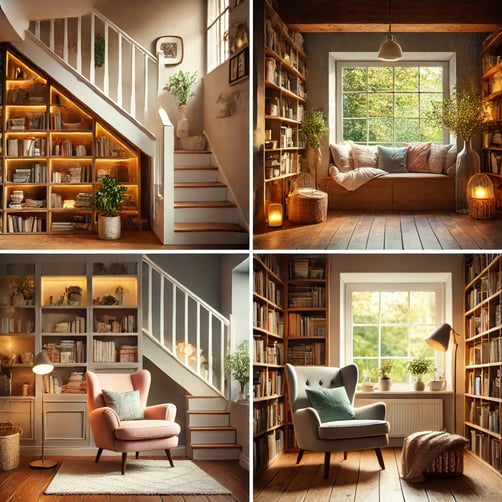
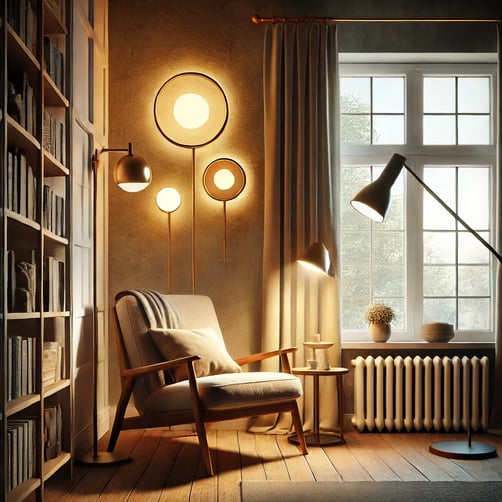
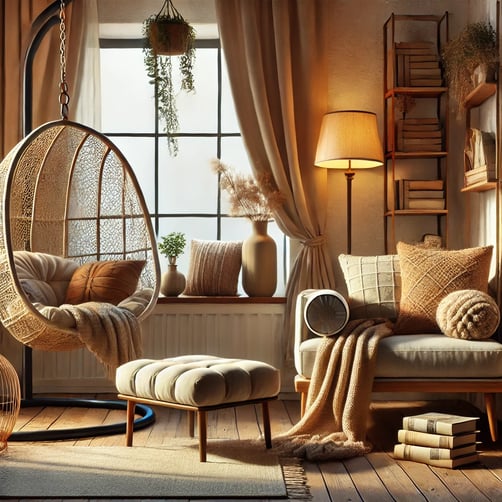
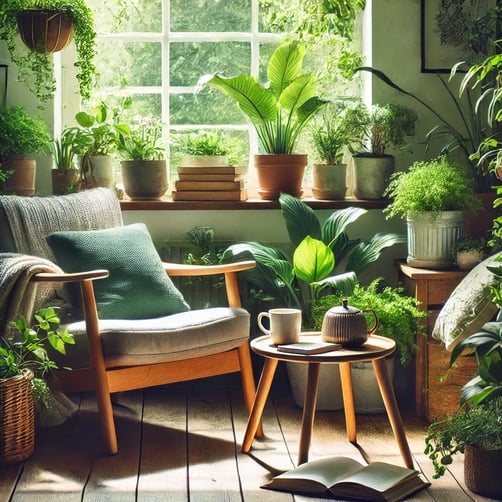
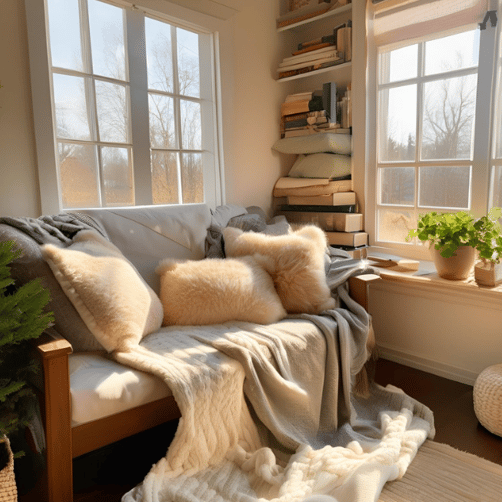
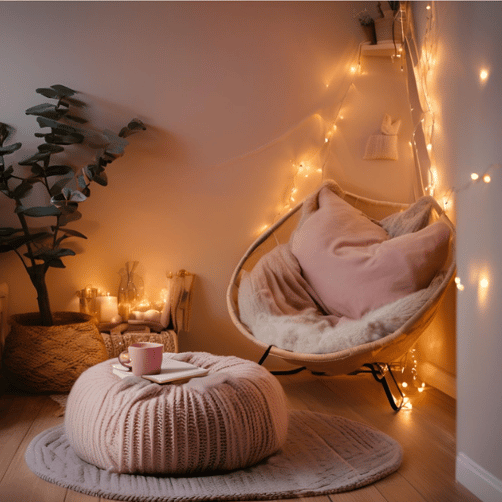
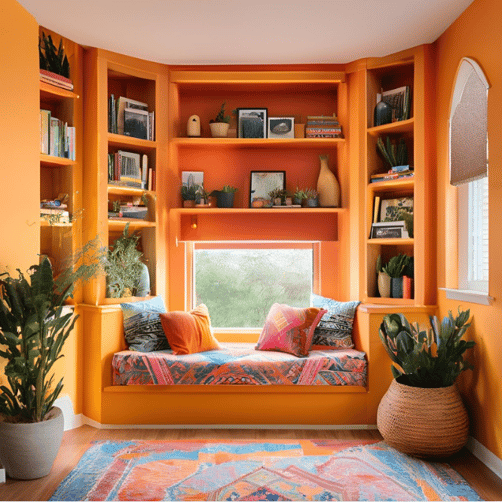
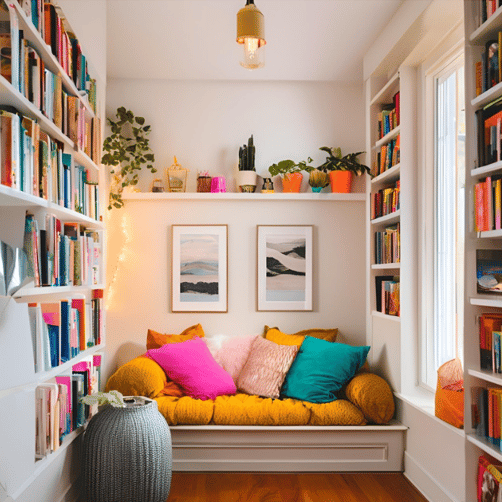
Inspiration
Explore ideas for your home and garden.
© 2025. All rights reserved.
